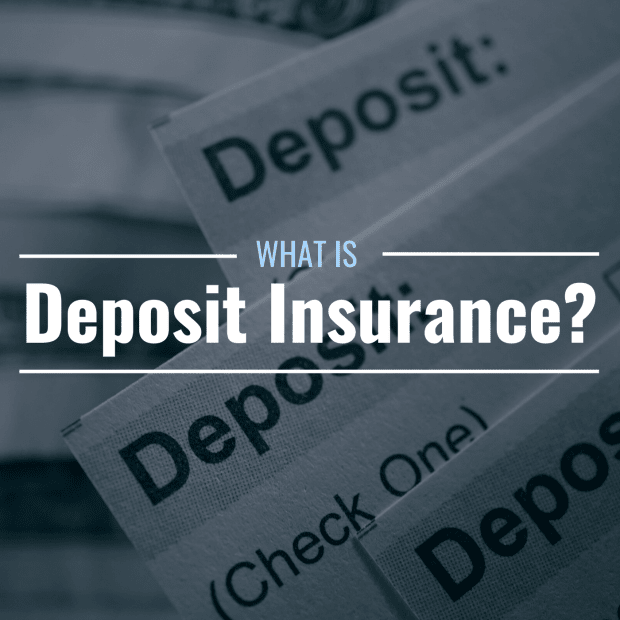
Kameleon007 from Getty Images Signature; Canva
What Is Deposit Insurance?
Amidst a wave of bank failures in 2023, Americans should take comfort in the fact that there’s an entire government agency whose mission is to keep their deposits safe.
The Federal Deposit Insurance Corporation (FDIC) was formed during the Great Depression. After the stock market crash of 1929, Americans lost confidence in the financial system (to put it mildly), and anxious depositors sparked bank runs with regularity. Nine thousand banks failed during the 1930s—just imagine what it would feel like to know that all your hard-earned money was gone, forever, with no chance of getting it back.
Out of the 9,000 banks that failed during the Great Depression, 4,000 failed in 1933 alone. Things had gotten so bad that just one day after being sworn in as U.S. President, on March 6, 1933, Franklin D. Roosevelt declared a three-day “bank holiday,” which immediately suspended all banking transactions in order to restore confidence in the banking system.
“Let me state the simple fact that when you deposit money in a bank the bank does not put the money into a safe deposit vault,” President Roosevelt said, “It invests your money in many different forms of credit—bonds, commercial paper, mortgages and many other kinds of loans. In other words, the bank puts your money to work to keep the wheels of industry and of agriculture turning around.”
Three months later, the Banking Act of 1933, also known as the Glass-Steagall Act, enforced tighter regulations over the financial industry, including the banking sector. A provision of this Act created the FDIC, and along with it, deposit insurance.
FDIC deposit insurance is guaranteed, or, in the organization’s own words, “backed by the full faith and credit of the United States government.” On its website, the FDIC states proudly that since its founding in 1933, no depositor has ever lost a single penny of FDIC-insured deposits.
Are All Bank Deposits FDIC-Insured?
Depositors should understand just what—and how much—is covered under the FDIC’s deposit insurance guarantee.
First, find out if your bank is FDIC insured by checking the FDIC’s bankfind tool.
Then, be sure to know which accounts are insured by the FDIC—just because your transaction took place at a bank doesn’t mean it’s automatically FDIC-insured.
For example, investments that fluctuate in value with market conditions, such as stocks, bonds, and mutual funds, are not FDIC-insured.
Examples of FDIC Ownership Categories
Just because you deposited funds into an FDIC-insured account at an FDIC-insured financial institution doesn’t mean you will receive 100% of your deposits back in the case of a bank failure. It’s worth taking a moment to understand how the FDIC defines its ownership categories, as well as what the maximum insured amount is for each. Here are a few of the most popular:
- Single accounts are owned by one person and are insured up to $250,000.
- Retirement accounts, including IRAs, 401(k)s, and 457 deferred compensation plans, get added together. Combined, they are insured up to a maximum of $250,000.
- Joint accounts are owned by two or more people. Each co-owner's shares in the account are added together for a maximum of $250,000.
- Revocable trust accounts, which identify beneficiaries upon the death of the original account’s owner, are insured up to $250,000 per beneficiary.
The FDIC maintains a tool called the Electronic Deposit Insurance Estimator (EDIE) that allows you input your account information so you can see what your total coverage is.
How Does the FDIC Insure Deposits?
FDIC deposit insurance is not federally funded. Instead, FDIC member banks pay a premium for deposit insurance coverage, which is what is used to pay to depositors.
If your bank fails, the FDIC will pay insurance on your deposits up to the insured limit. This usually takes place within one business day of the bank’s closing. The insurance is paid either by check or by opening a new account at the acquiring bank in an amount equal to the insured balance.
By the way, the FDIC’s job isn’t solely related to depositors. It also acts as a receiver of the failed bank’s assets and also settles its debts. This could include claims for deposits that exceed the insured limits, and depositors of uninsured assets may also receive a pro-rata payment based on their claims.
Can You Buy Deposit Insurance?
You don’t need to purchase deposit insurance. Just by opening an eligible account at an FDIC-member financial institution, you are covered up to its $250,000 insured guarantee.
1930s banking customers only wish they had it so good.







